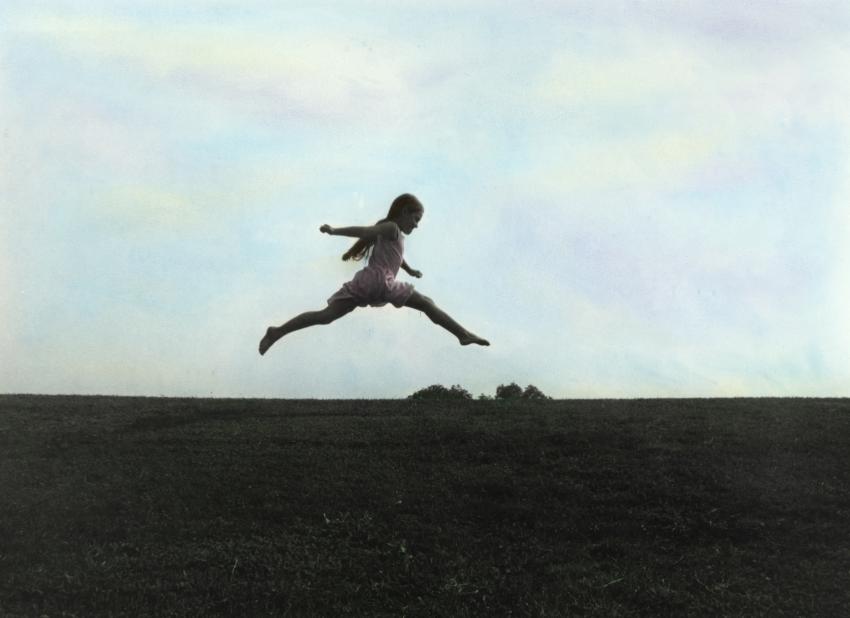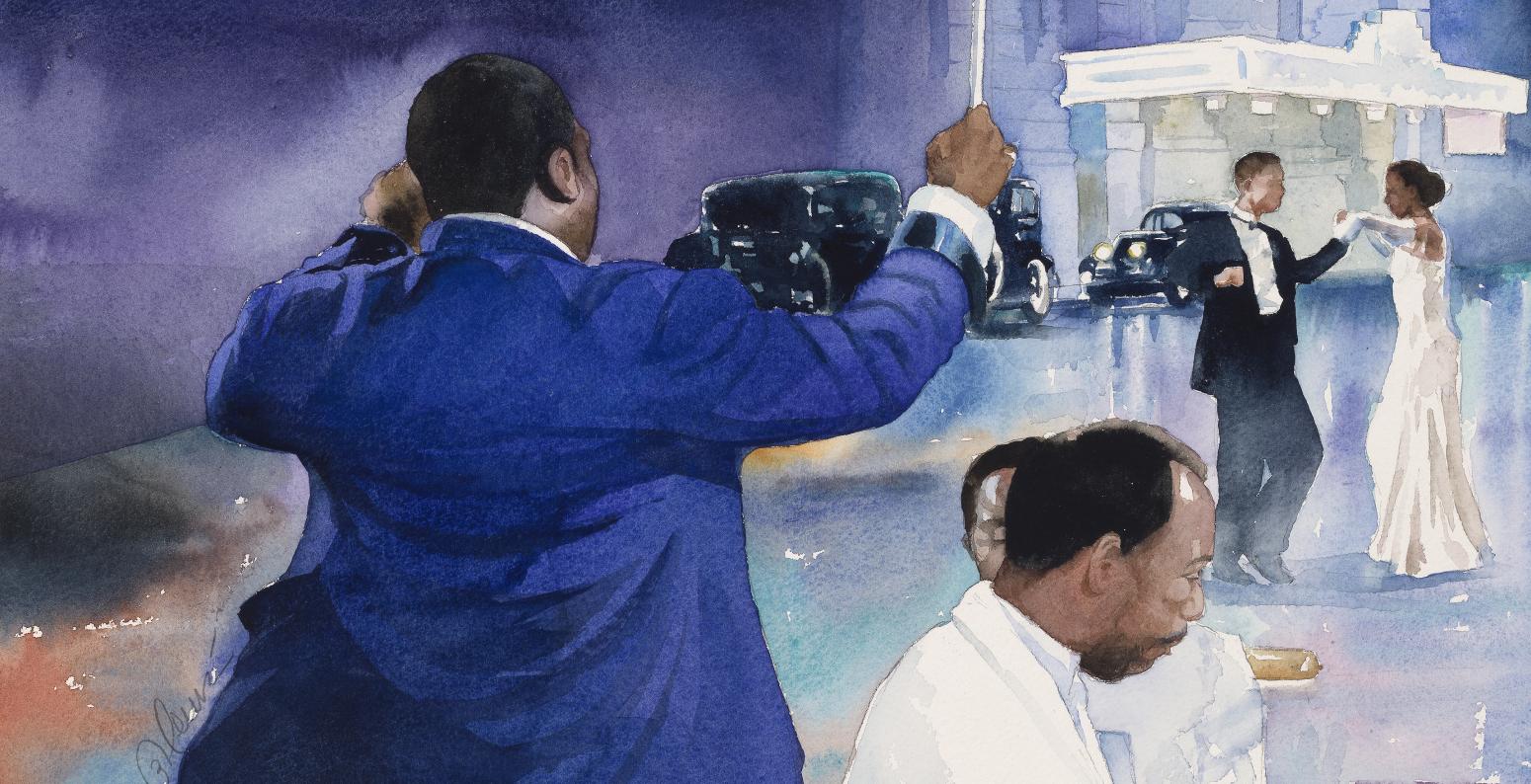
Music & Dance
Mary Azarian
Mary Azarian (b. 1940) studied printmaking at Smith College with Leonard Baskin, one of the great 20th-century printmakers. In 1982, she illustrated The Tale of John Barleycorn, a medieval English ballad about beermaking. In this woodcut, a couple join hands across the letter T as they celebrate a successful harvest. Azarian has illustrated over 50 books, including Snowflake Bentley (1998), for which she won a Caldecott Medal.
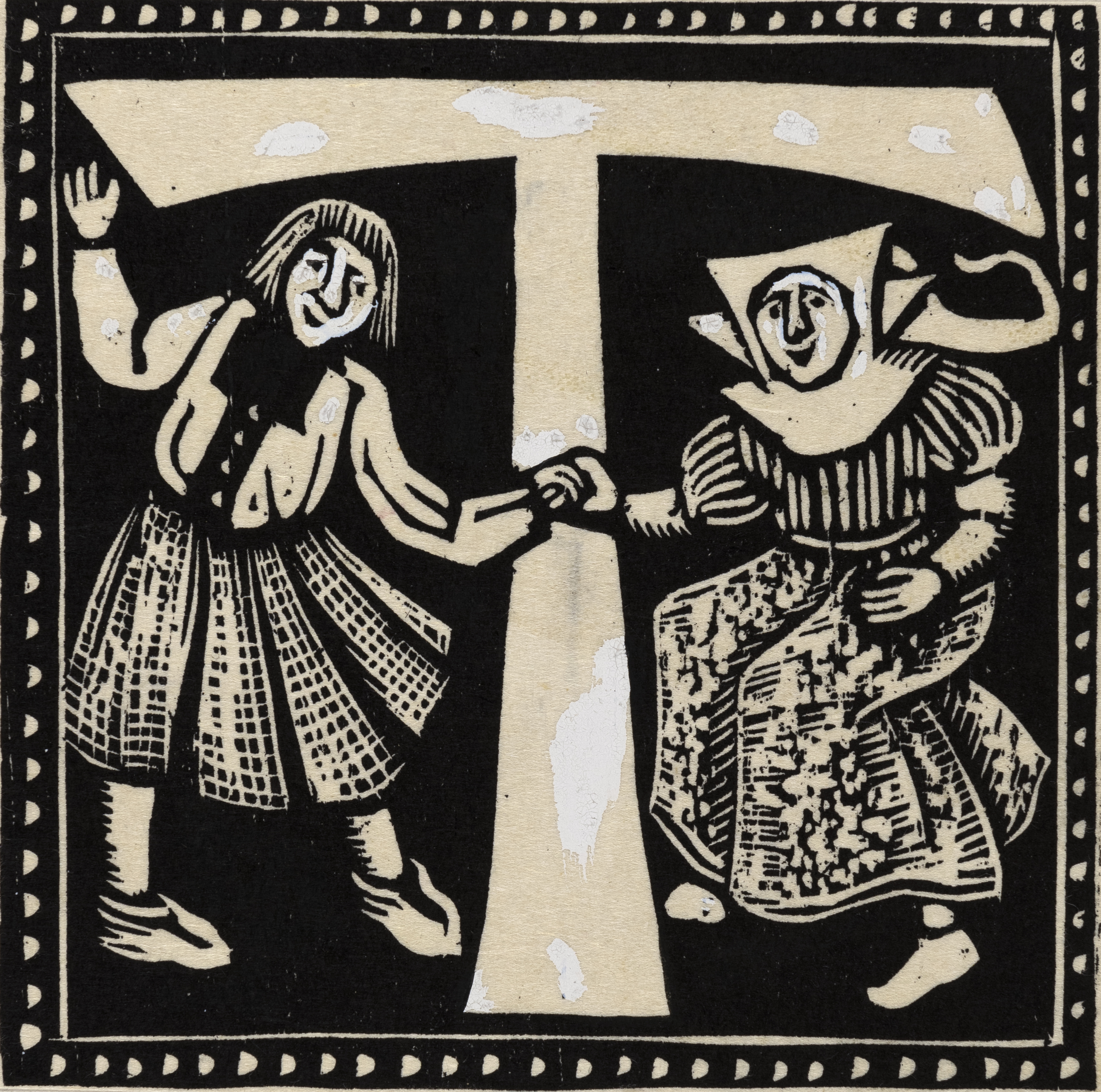
Mary Azarian, Illustration for The Tale of John Barleycorn or From Barley to Beer. Gift of David R. Godine, Publisher Inc. © 1982 Mary Azarian.
Bonnie Christensen
For her illustrated biography of Woody Guthrie, Bonnie Christensen (1951–2015) captivatingly introduces young readers to the powerful messages of Guthrie’s songs, including “This Land is Your Land.” In dark, earthy tones, her watercolors capture Guthrie’s hardscrabble youth in Oklahoma, the dust bowl and Great Depression, and the plight of farm workers, coal miners, and factory hands that inspired his social messages and protest songs. Christensen was awarded numerous book awards for her non-fiction illustrated volumes.
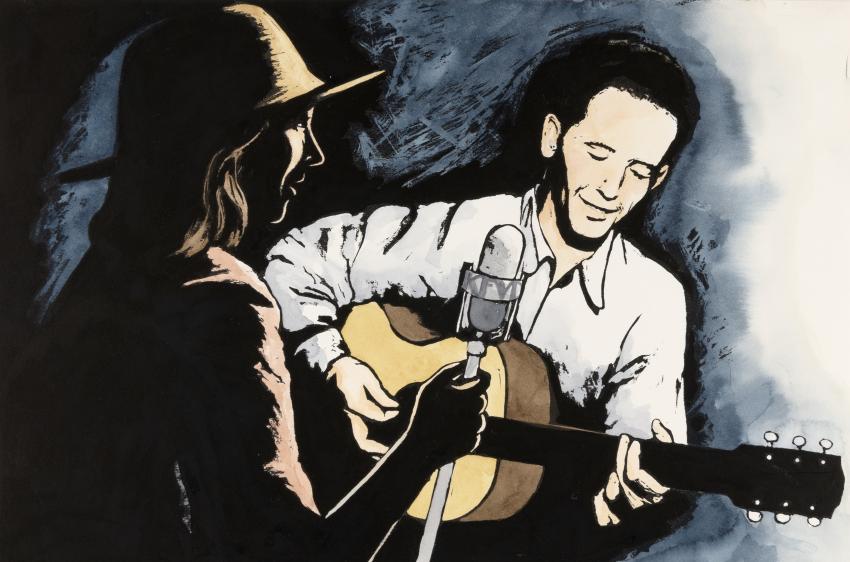
Bonnie Christensen, Illustration for Woody Guthrie: Poet of the People. Gift of Emily Herder, daughter of the artist. © 2001 Bonnie Christensen.
Bryan Collier
Bryan Collier (b. 1967) gives visual form to the lyrics “My Country ‘Tis of Thee,” a patriotic song adopted by generations of protestors and civil rights activists. His dazzling collage bursts with American symbolism, yet distant battle ships and smoke also foretell of conflict. With six Coretta Scott King Illustrator awards and four Caldecott Honor awards, Collier is renowned for his portrayals of the African American experience.
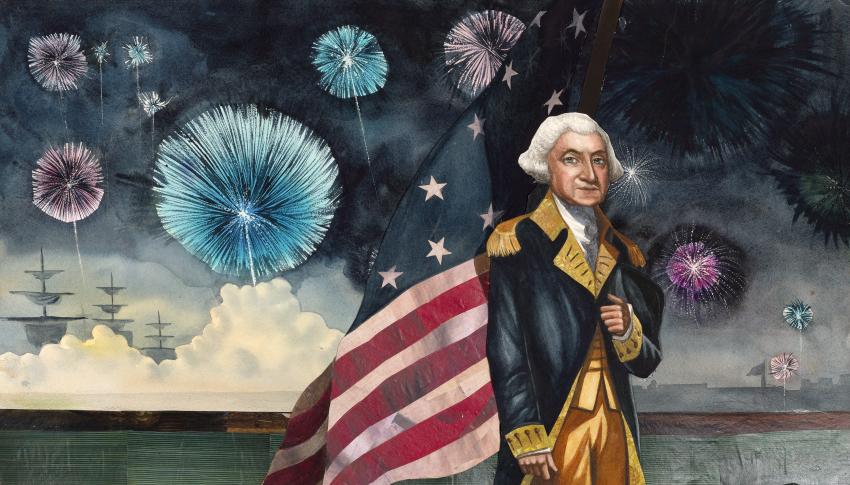
Bryan Collier, Illustration for My Country ‘Tis of Thee: How One Song Reveals the History of Civil Rights by Claire Rudolf Murphy. Anonymous gift. © 2014 Bryan Collier.
Scott Gustafson
Scott Gustafson’s (b. 1956) counting book features a menagerie of amusing animals and their instruments. His layered papers add structure to the composition, and he paints each musician—skin, fur, and feathers—in masterful detail. Humorous touches (what’s in the parrot’s trumpet?) add to the spirited scene.
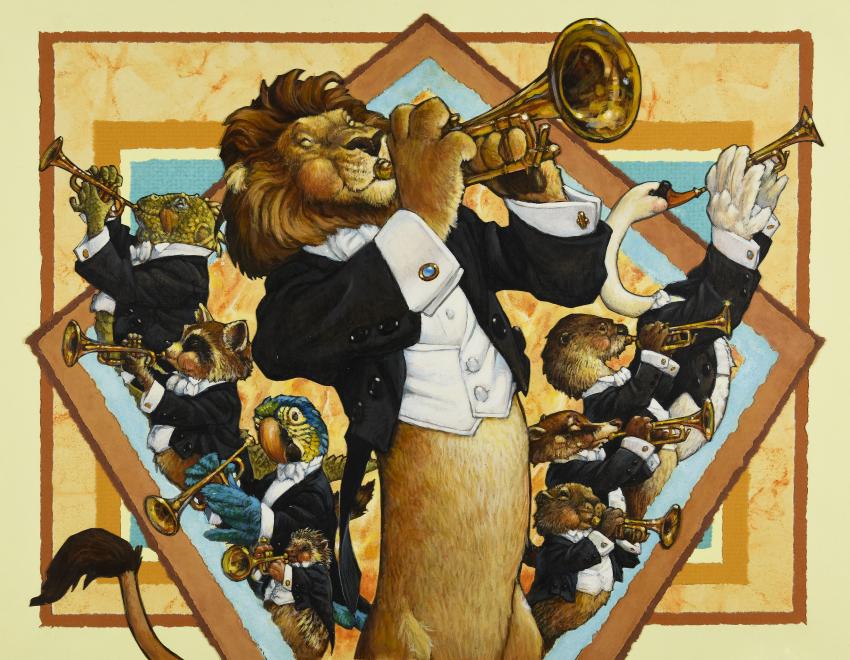
Scott Gustafson, Illustration for Animal Orchestra (The Greenwich Workshop Press) Gift of the Charles Collection. © 1988 Scott Gustafson.
Ekua Holmes
Ekua Holmes (b. 1955) created this collage for Kwame Alexander’s book Out of Wonder, a collection of contemporary poems that pay homage to famous poets. Through a vibrant mix of papers, Holmes immerses readers in the jazzy rhythms of Langston Hughes’s Harlem Renaissance era. She constructs her church’s stained-glass windows with musical sheets and dresses her subjects in the bold patterns of 1920s New York. Green dollar bills and gold coins erupt from a trumpet, “Hooray, the rent’s been paid!”
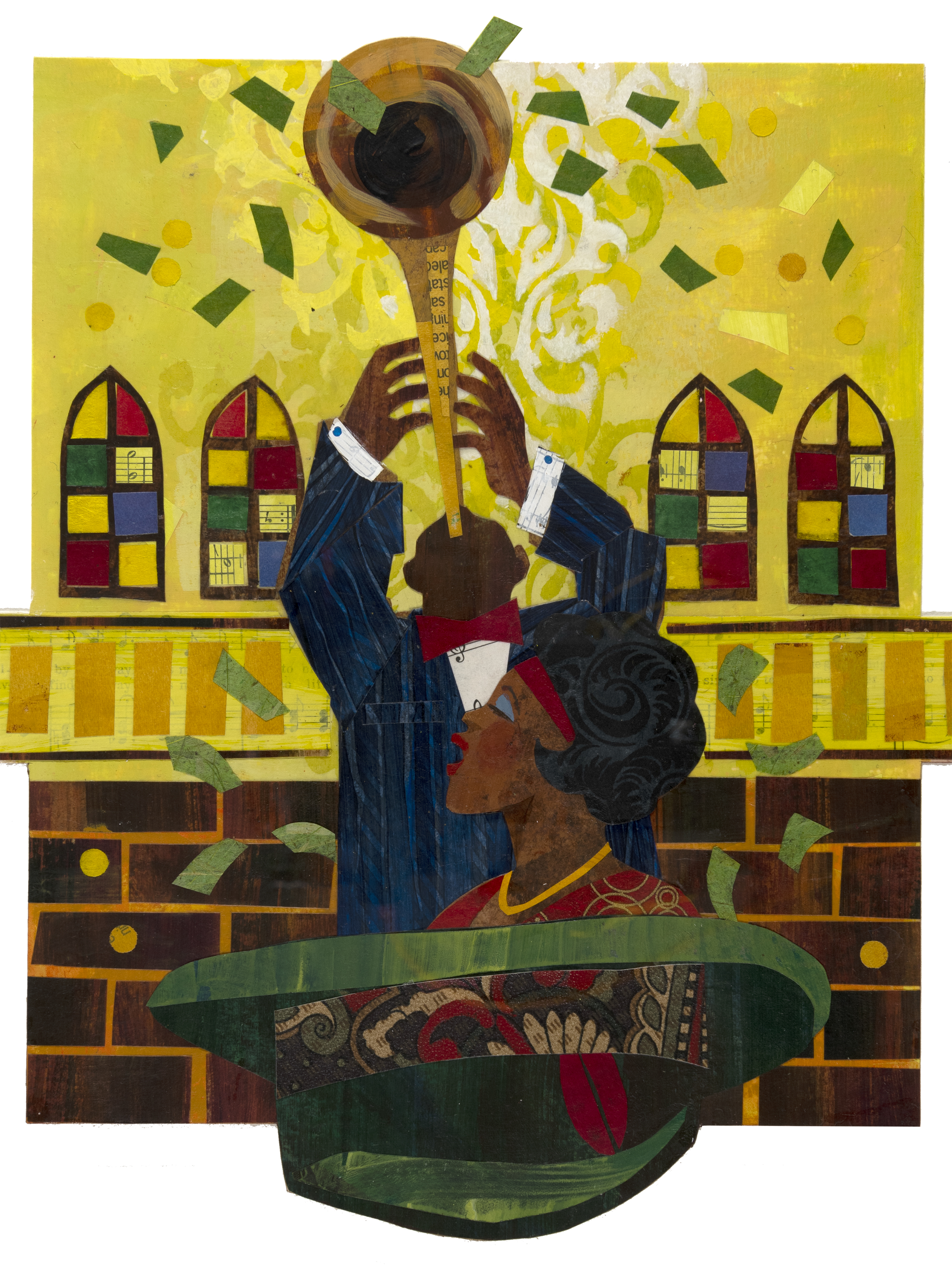
Ekua Holmes, Illustration for Out of Wonder: Poems Celebrating Poets by Kwame Alexander. Promised gift of H. Nichols B. Clark and Ekua Holmes in honor of Ashley Bryan. © 2017 Ekua Holmes.
Leonard Jenkins
Leonard Jenkins employs a dark palette of acrylic paint, pastel, and collage to create a compelling scene of Louis Armstrong’s youth. Holding his horn aloft, a teenage Louis triumphantly leads a procession of “rough and tumble characters” down Perdido Street in New Orleans. Bursts of yellow and pink punctuate the scene while recurring circular forms unite the cinematic composition.
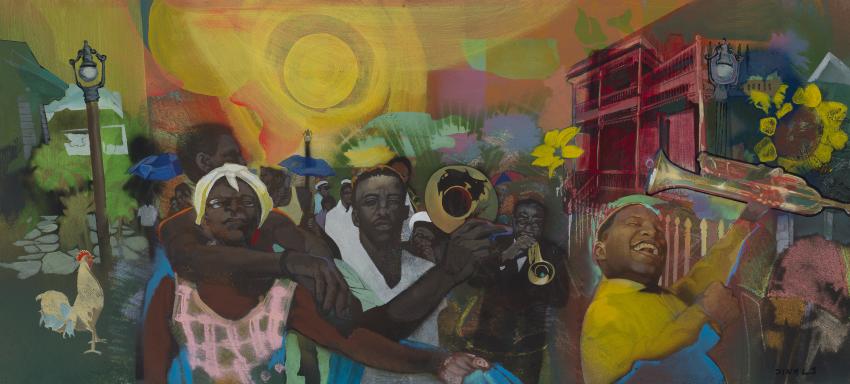
Leonard Jenkins, Illustration for If I Only Had a Horn: Young Louis Armstrong. Gift of Smith Kramer, Inc. © 1997 Leonard Jenkins.
E. B. Lewis
E. B. Lewis’s (b. 1956) radiant watercolors in D is for Drinking Gourd illustrate the myriad contributions of African Americans through history. This dreamlike montage evokes the sounds and elegance of the Harlem Renaissance, a period of profound cultural achievement in the 1920s.
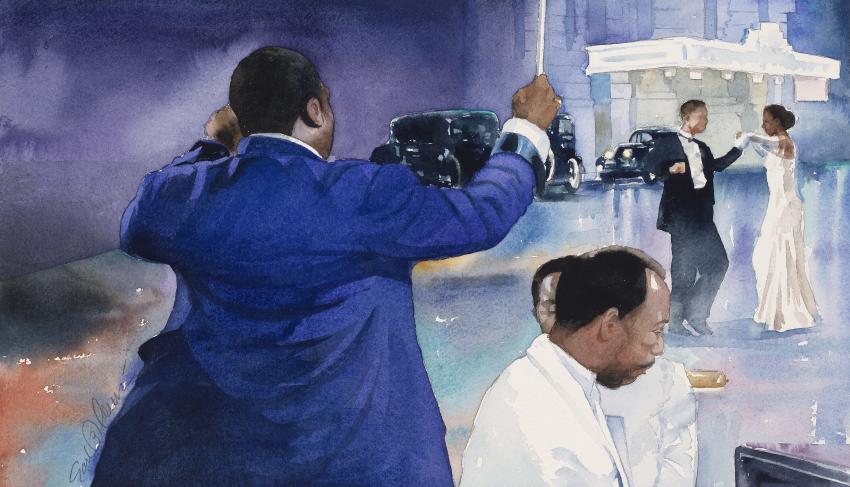
E. B. Lewis, Illustration for D is for Drinking Gourd: an African American alphabet by Nancy I. Sanders. Gift of Elizabeth O’Grady & Jeffrey P. Dwyer. © 2007 E. B. Lewis.
Marjorie Priceman
With legs kicked up and fingers splayed, Marjorie Priceman’s (b. 1958) elastic characters float across every page in the musical counting book Zin! Zin! Zin! A Violin. Swaths of vivid color and loose brushwork define the exuberant compositions for which Priceman was awarded a Caldecott Honor. Lloyd Moss, former radio host on New York’s classical musical station WQXR, composed the book’s rhyming text.
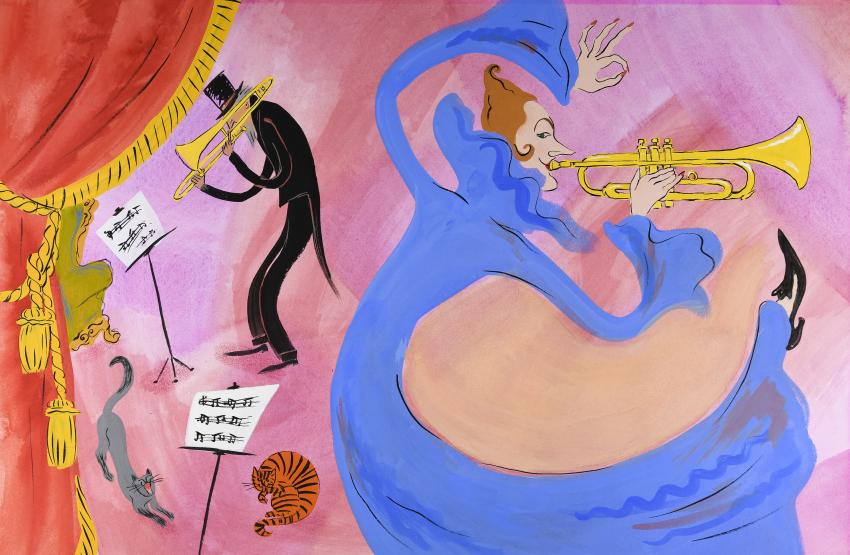
Marjorie Priceman, Illustration for Zin! Zin! Zin! A Violin by Lloyd Moss. Gift of Anne Moss. © 1996 Marjorie Priceman.
Shelley Rotner
Shelley Rotner has built her career on picture book photography. Her exuberant, full color images in Action Alphabet depict children in activities that correspond to each letter, such as L is for Leaping. Rotner hand-colored this unpublished black-and-white photograph, creating a quieter mood than her close-up image in the book.
